BARA: Known for the sacrificial slaughters of thousands of animals, the Gadhimai Mela is in celebration these days in 11 places of 3 districts of Province number 2.
The sacrificial festival observed once in five years is being celebrated in 7 places of Rautahat, 2 places of Sarlahi and 2 places of Bara, the districts of mid-terai in Nepal.
Despite the Supreme Court’s verdict directing the relevant agencies to create an action plan to discourage and eventually end animal sacrifice at Gadhimai and elsewhere in the country, the practice of animal slaughter seems far from declining. The crowd of the pilgrims at the site spread in 5 kilometers is the witness of the fact that more than legal restrictions, social and cultural awareness about the alternatives for the sacrifice is a must.

Despite the outcry of the animal rights activist, the deep-rooted belief that animal sacrifice can help family members ward off the evil influence has been catalytic in the continuation of the practice.
The festival starts with the sacrificial slaughters of mouse, pigeon, goat, buffalo, and rabbit, also known as panchabali(sacrifice of five animals). After panchabali the sacrifice is open for the public, i.e. the pilgrims there can get their animals sacrificed.
Prior to Panchabali, a tantric (this year, Dukha Dhami) pokes at the forehead, ear, tongue, right chest, right loin with the sanctified weapon and offers the blood of these five parts to Goddess Gadhimai, one of the forms of Durga.

The animals brought by the pilgrims are collected at badhshala (slaughterhouse) near the Bramhasthan(the central point) and later are slaughtered by hundreds of volunteer slaughterers assigned by the Gadhimai festival organizing committee. The committee offers the volunteer slaughterers the local weapon, dagger, khukuris, and swords to be used to behead the animals.
35000 buffaloes and thousands of goats sacrificed
According to the organizing committee, more than 35000 buffaloes and thousands of goats are sacrificed this year. The devotees who do not like killing take the pigeons and set the pigeons free at the site.
This year, Gadhimai Temple operation and development committee, Bariyarpur along with Mahagadhimai Municipality, Bariyarpur Bara had jointly organized a special procession on Ghatasthapana day (the first day of Dashain). To ensure the proper arrangement of the celebration, various committees and sub-committees are formed and mobilized.
More than 200 big tents are arranged for the convenience of the devotees. The organizing committee claims to have arranged for the basic facilities like foods and toilets.
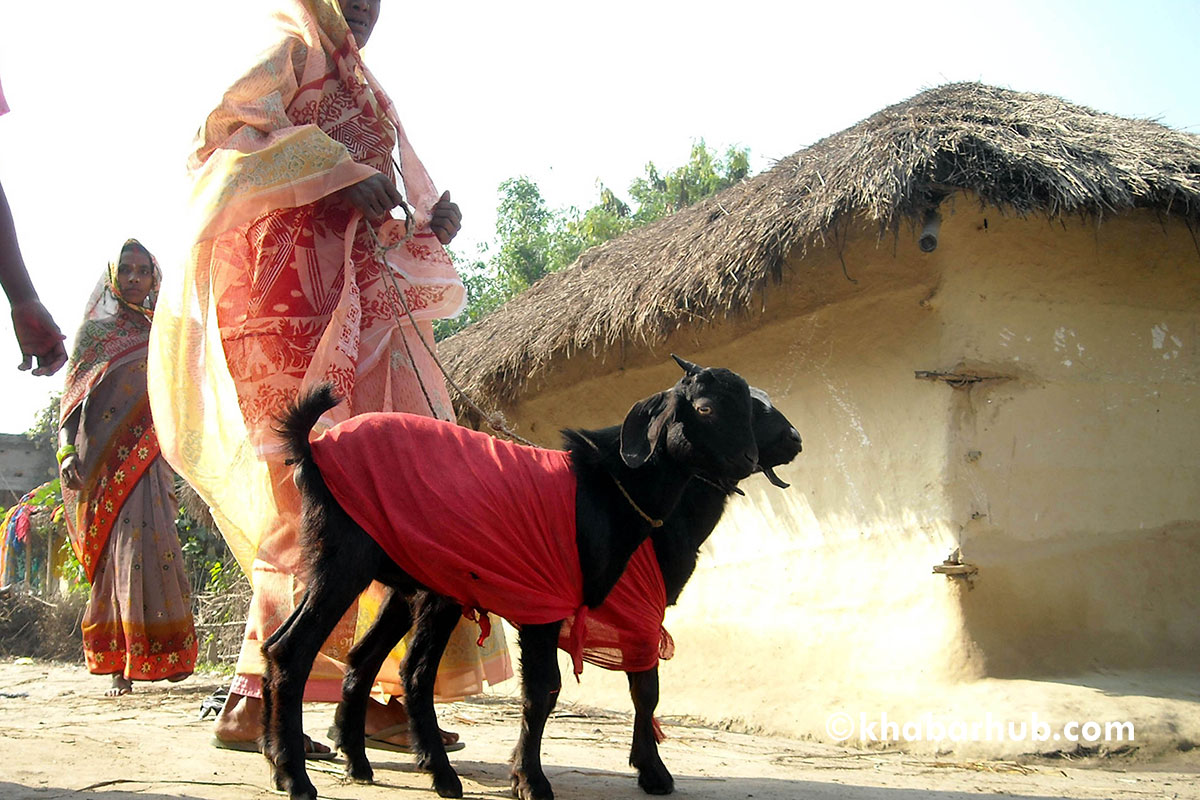
The festival which started on November 17 will be on mark till December 16. To ensure proper security of the holy site, devotees, the tourists visiting the area, Nepal Police, Armed Police and the security persons in guise are mobilized in and around the area. The Committee has expected more than 10 million visitors this year.
The Myths and heresies about Gadhimai
According to one of the myths popular in the area, Bhagawan Das Tharu, a murder alleged was in jail quite long. One night, while he was sleeping, Goddess Tulaja Bhawani of Makawanpurgadhi gave a trident and instructed him to take her to his village. Provided he did so, the story goes ahead, Tulaja would free him from all sufferings, including releasing him from jail.
According to the story, while returning from jail, Tharu fixed the trident at Bariyapur, the place hinted by Goddess Durga. The place he fixed the trident is the site where the Gadhimai temple is located these days.
Mangal Chaudhary, the main priest at the temple, is the 10th successor of Tharu. Since then, the responsibility of taking care of the rituals and offering puja at the temple is handed to the successors of Tharu.

Thus, the story hails back to 17th century.
Thus commences the sacrificial ceremony
After the main priest executes panchbali, the sacrifice of white mouse, pigeon, duck, pig, and buffalo together with the tantric rituals on Marga Shukla Saptami according to the solar calendar, the ritual gets formal kick-off.
Human sacrifice is also a part of the ritual observed to appease Goddess Tulaja, also known as Gadhimai. The symbolic sacrifice is done by offering blood cutting 5 different parts of the body. This time Dukha Dhami a tantrik from Simri, Rautahat, poked at the forehead, ear, tongue, right chest, right loin with the sanctified weapon and marked the beginning.

The puja (worship) is executed throughout the night. As an effect of the puja and the prayers, it is said, the holy light is lit up automatically at Bramhasthan, the central place of worship. “After the automatic kindling of the light, panchabali starts,” says Mangal Chaudhary, the chief priest of the temple.
Sacrifice, often criticized as the violent act, has a long history in Hinduism. The people arguing against it take the practice as a wrong interpretation of the symbolic message of abstaining beastly and demonic qualities.
Formally, the government of Nepal, the Supreme Court of Nepal and the Supreme Court of India and many sages around have attempted to stop it. However, the ritual is going on.
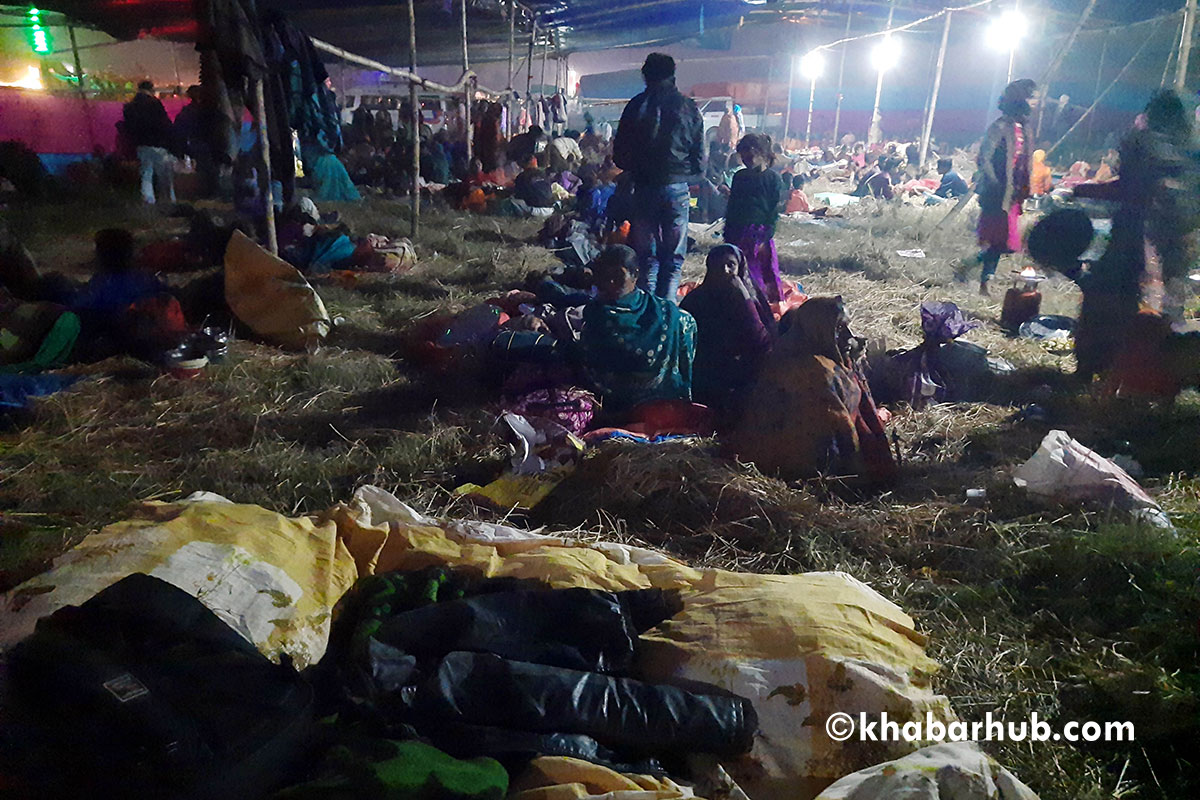

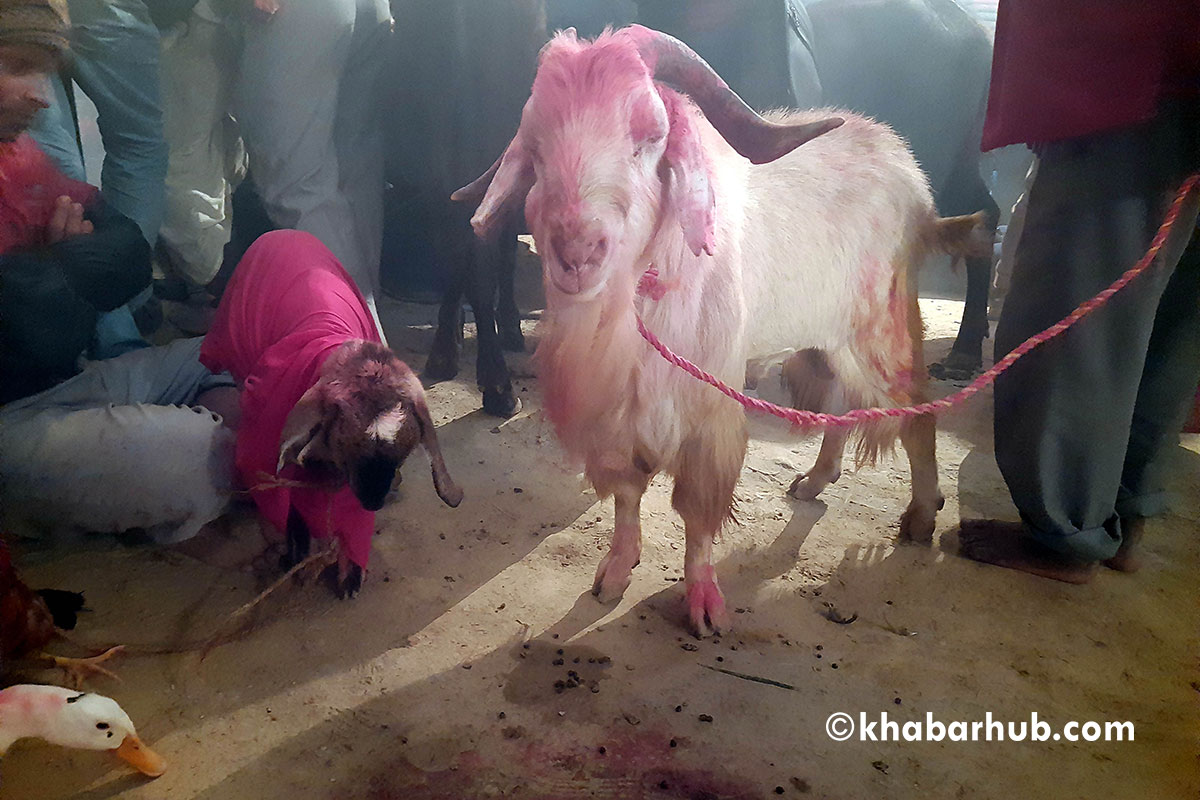

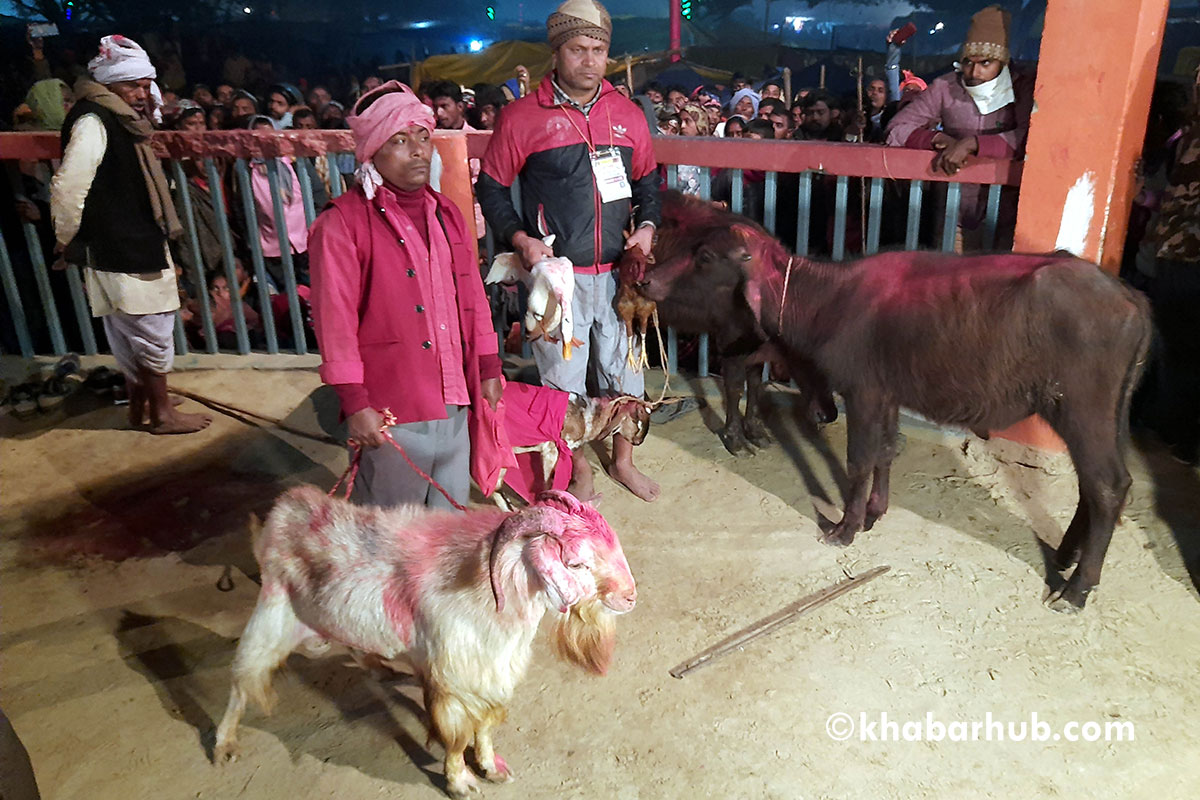
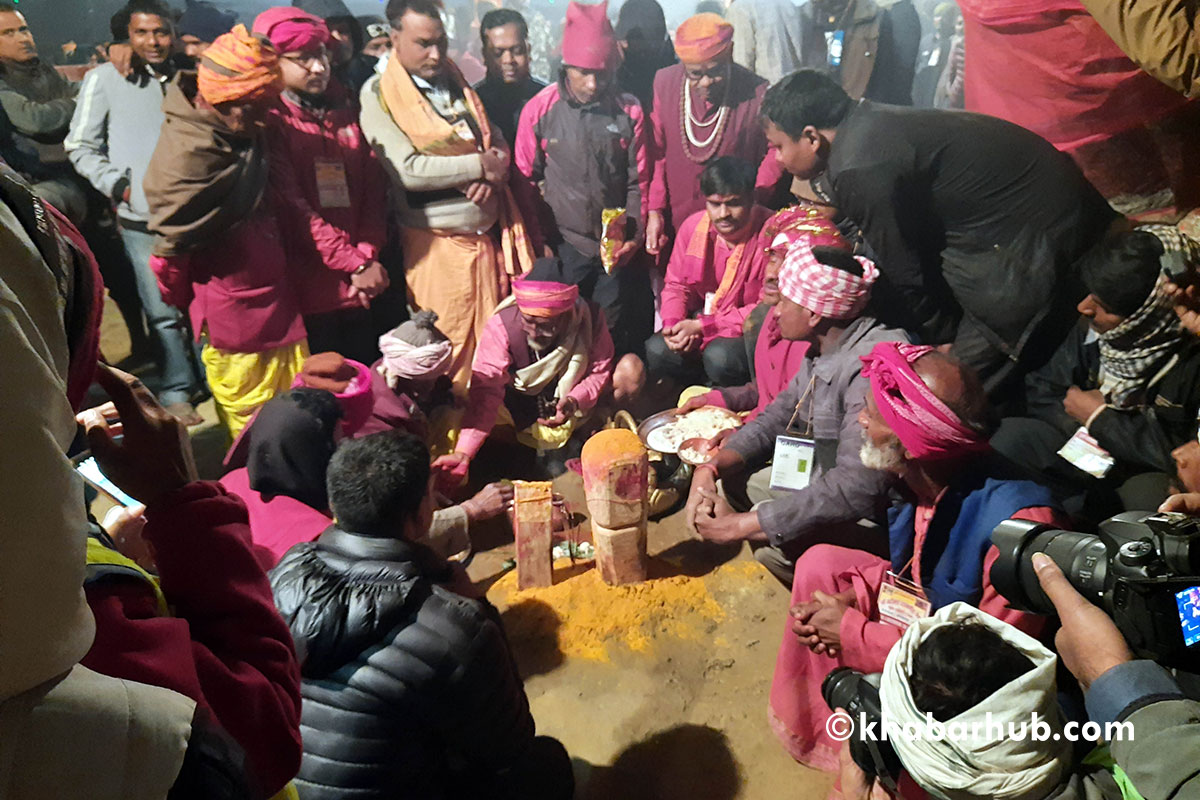
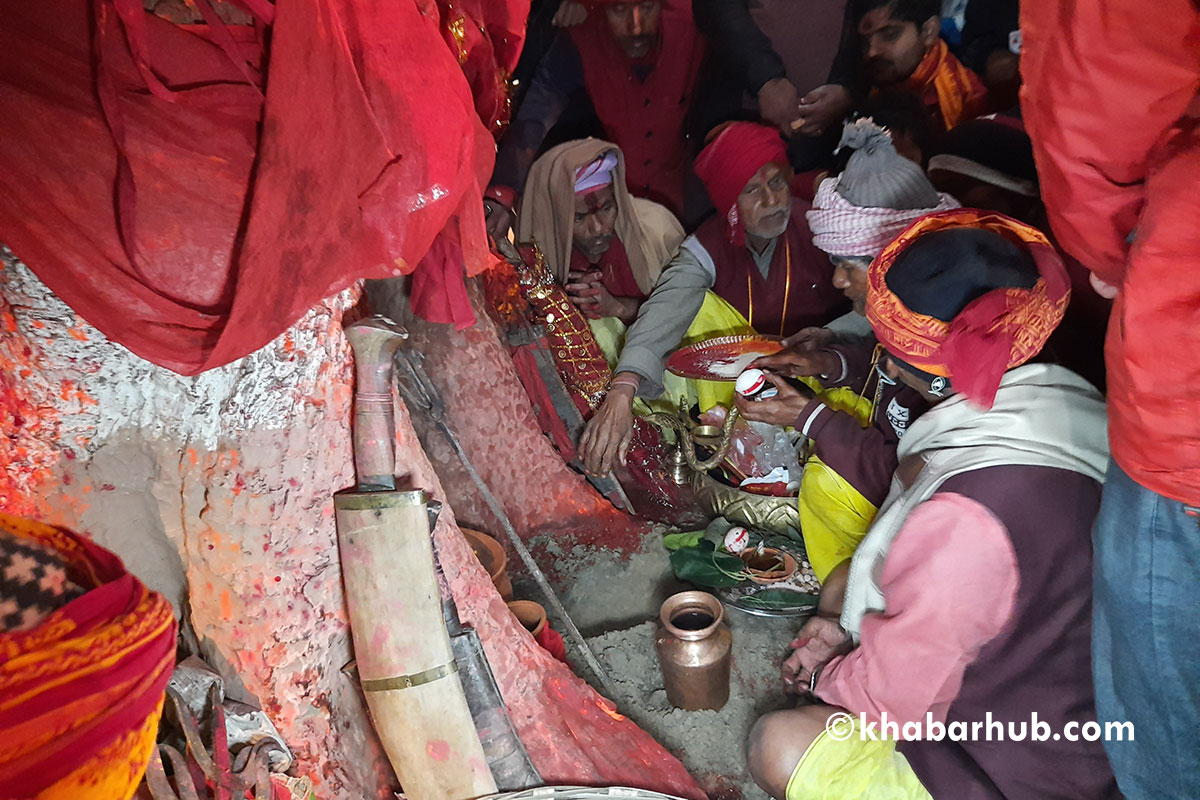










Comment